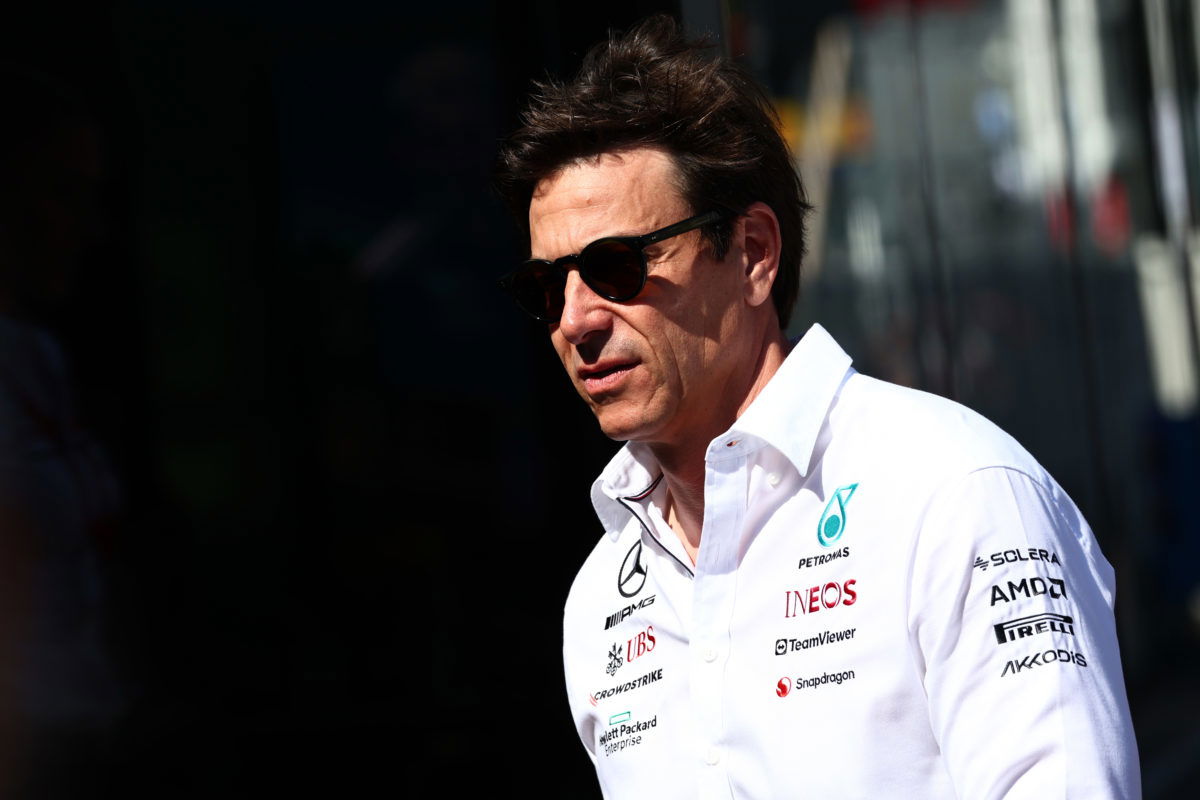

Mercedes team principal Toto Wolff has told Red Bull counterpart Christian Horner there is “zero chance” of late changes being made to the 2026 power unit regulations.
Wolff has also said the reason why Horner has suggested that tweaks should be made is that his own Red Bull Powertrains department is struggling to develop the architecture of its own PU for the first time.
Horner has called for urgent revisions of the 2026 regulations out of concern they will result in “a technical Frankenstein”, with the yet-to-be-defined aerodynamic revisions compensating for what will be a 50-50 split between combustion and electrical power.
The MGU-H element of the current PU is being axed, with more emphasis being placed on the MGU-K, leading to a more equal playing field to power an F1 car.
Horner feels a five-to-10 percent shift in favour of combustion will be beneficial for all the PU manufacturers, and will aid the aerodynamic design of the cars.
But a dismissive Wolff feels there is scope for the sport’s aerodynamicists to be creative in order to overcome any PU deficiencies.
“We need to have good chassis regulations because we have a challenging power unit, but (one that) will be very efficient, and state of the art in terms of architecture, between 50 percent electric and 50 percent combustion,” said Wolff.
“It is very important in Formula 1 that we stay at the forefront of innovation.
“That means we need to build a car that has to be aerodynamically efficient in order to compensate for the loss of energy, so that is an exciting project to aim for.
“What does the modern Formula 1 car of 2026 look like? How can we make it aerodynamically so efficient and capable that it can compensate for the lack of (power from) the combustion engine?
“That should all excite us because we will come up with new concepts of Formula 1 cars that will be great.”
Pointedly commenting on Red Bull’s own PU development, Wolff added: “I think what frightens him (Horner) more is that maybe his engine programme is not coming along and maybe he wants to kill it that way.
“You always have to question what is the real motivation to say something like that.”
The new regulations for 2026 took a considerable period of time to lock down and ultimately resulted in Audi entering F1 for the first time, Red Bull’s former supplier Honda opting to return, and Ford linking up with Horner’s team.
As to whether F1 could now row back on what has been agreed, Wolff replied: “That’s not going to happen. Zero chance – capital letters. I don’t know why these things are coming up.
“We’ve developed the regulations over many years with all the auto manufacturers being involved, a compromise that attracted Audi to finally join the sport, (and) for Honda to stay in there. It’s the best possible case that one could imagine for Formula 1.
“Is it challenging? Our chassis designers are saying ‘Well, how we are going to do this?’. Yeah. Super.
“But, zero [chance]. These regulations are not going to change anymore. They’re not going to be postponed anymore because the world needs to show innovation around sustainability, (and) we need to reduce emissions and we are super excited.”
Horner has suggested that unless changes are made, the sport would likely see races where drivers are “downshifting on straights to regenerate batteries”.
Wolff laughed off the notion. He said: “Do you think that in all reality we are not innovative in this sport to come up with chassis, engine regulations that can avoid drivers shifting down on the straight? It just isn’t real.
“When you take today’s chassis and put the future power unit in there, there are a few tracks with very long straights where we would have massive de-rates in the power unit. That’s today’s situation.
“But we are not bolting on today’s chassis, which are heavy like a prototype and big like an elephant. That’s what we need to reinvent for 2026.
“Whether it is some retractable aerodynamic elements, or whether the shapes of the cars are going to change in order to meet the more sustainable world, more aerodynamic efficiency, I think that’s great, and so spectacular as a regulation.
“There will be things that we will be translating into other industries, the auto industry, the viable solutions that we need to come up with in order to avoid downshifting.
“I don’t want to give anybody ideas that we really need to downshift. That’s not going to happen.”






















Discussion about this post